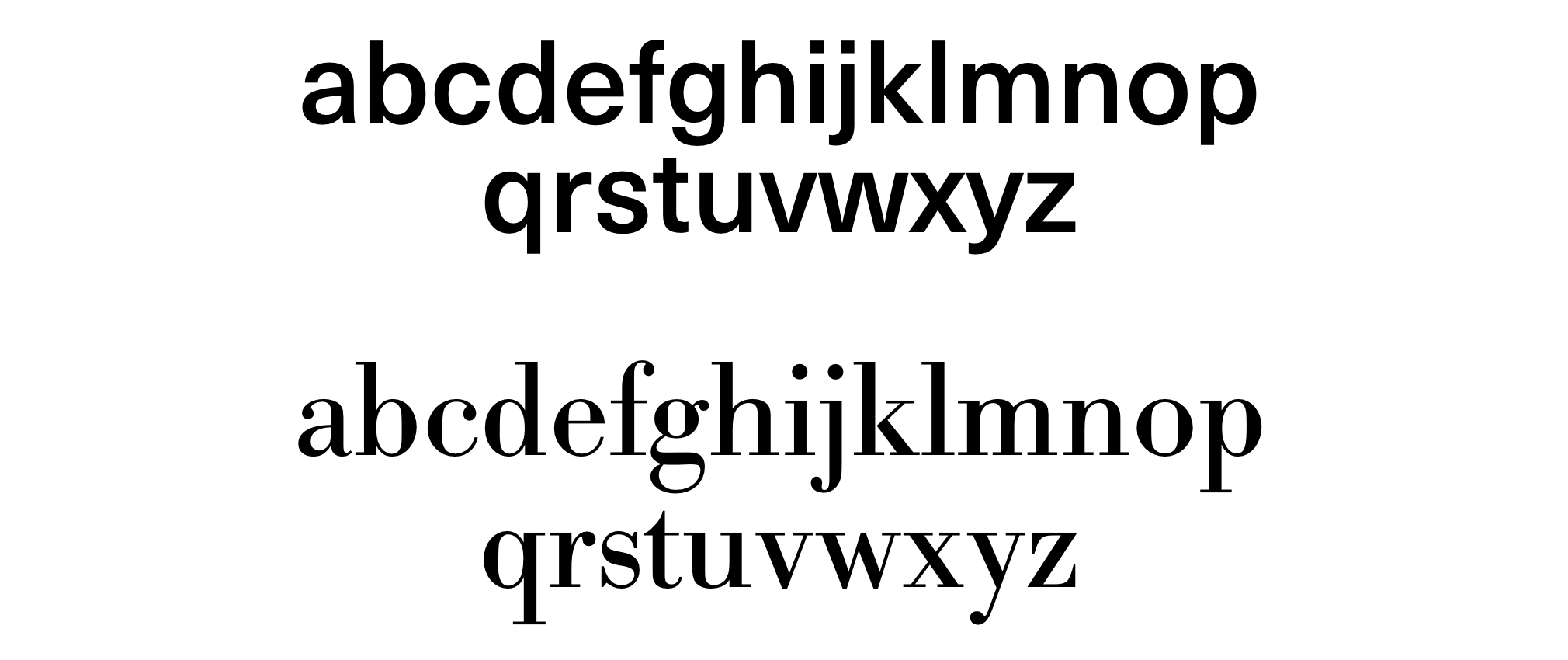Assignment 02
Cube: Design
Design a six-sided cube using the supplied Illustrator Template. Choose one letterform from the typefaces “Univers” or “Bodoni” as a design element and apply this letter to each side of a 3-dimensional cube. The design on each side should not only incorporate the chosen letterform but also represent and embody a chosen design principle. Black & White only, no color.
Due This Week
Print out and assemble the first round of your cube
Bring in your laptop to work on your design in class
We will conduct desk crits this week
Learning Outcomes
1. To demonstrate an understanding of fundamental design principles.
2. To apply design principles to a 3D object.
3. To create a visually cohesive and engaging design using limited typographic elements.

Background
In typography, a serif is a small line attached to the end of a stroke in a letter or symbol. A typeface with serifs is called a serif typeface (or serifed typeface). A typeface without serifs is called sans-serif or sans serif, from the French sans, meaning “without”. Some typography sources refer to sans-serif typefaces as “Grotesque” (in German “grotesk”) or “Gothic”, and serif typefaces as “Roman”.
Univers
designed by Adrian Frutiger (1957)
Univers was one of the first typeface families to fulfil the idea that a typeface should form a family of consistent, related designs. Past sans-serif designs such as Gill Sans had much greater differences between weights, while loose families such as American Type Founders' Franklin Gothic family often were advertised under different names for each style, to emphasise that they were not completely matching. By creating a matched range of styles and weights, Univers allowed documents to be created in one consistent typeface for all text, making it easier to artistically set documents in sans-serif type. This matched the desire among practitioners of the “Swiss style” of typography for neutral sans-serif typefaces avoiding artistic excesses. Source.
Bodoni
designed by Giambattista Bodoni (1740–1813)
Bodoni is the name given to the serif typefaces first designed by Giambattista Bodoni in the late eighteenth century and frequently revived since. Bodoni's typefaces are classified as Didone or modern. Bodoni followed the ideas of John Baskerville, as found in the printing type Baskerville—increased stroke contrast reflecting developing printing technology and a more vertical axis—but he took them to a more extreme conclusion. Bodoni had a long career and his designs changed and varied, ending with a typeface of a slightly condensed underlying structure with flat, unbracketed serifs, extreme contrast between thick and thin strokes, and an overall geometric construction.
When first released, Bodoni and other didone fonts were called classical designs because of their rational structure. However, these fonts were not updated versions of Roman or Renaissance letter styles, but new designs. They came to be called ‘modern’ serif fonts and then, until the mid-20th century, they were known as Didone designs. Bodoni‘s later designs are rightfully called “modern”, but the earlier designs are now called “transitional”. Source.
This has been adapted from an assignments given by Jim Downer at Monroe Community College. Thank you.